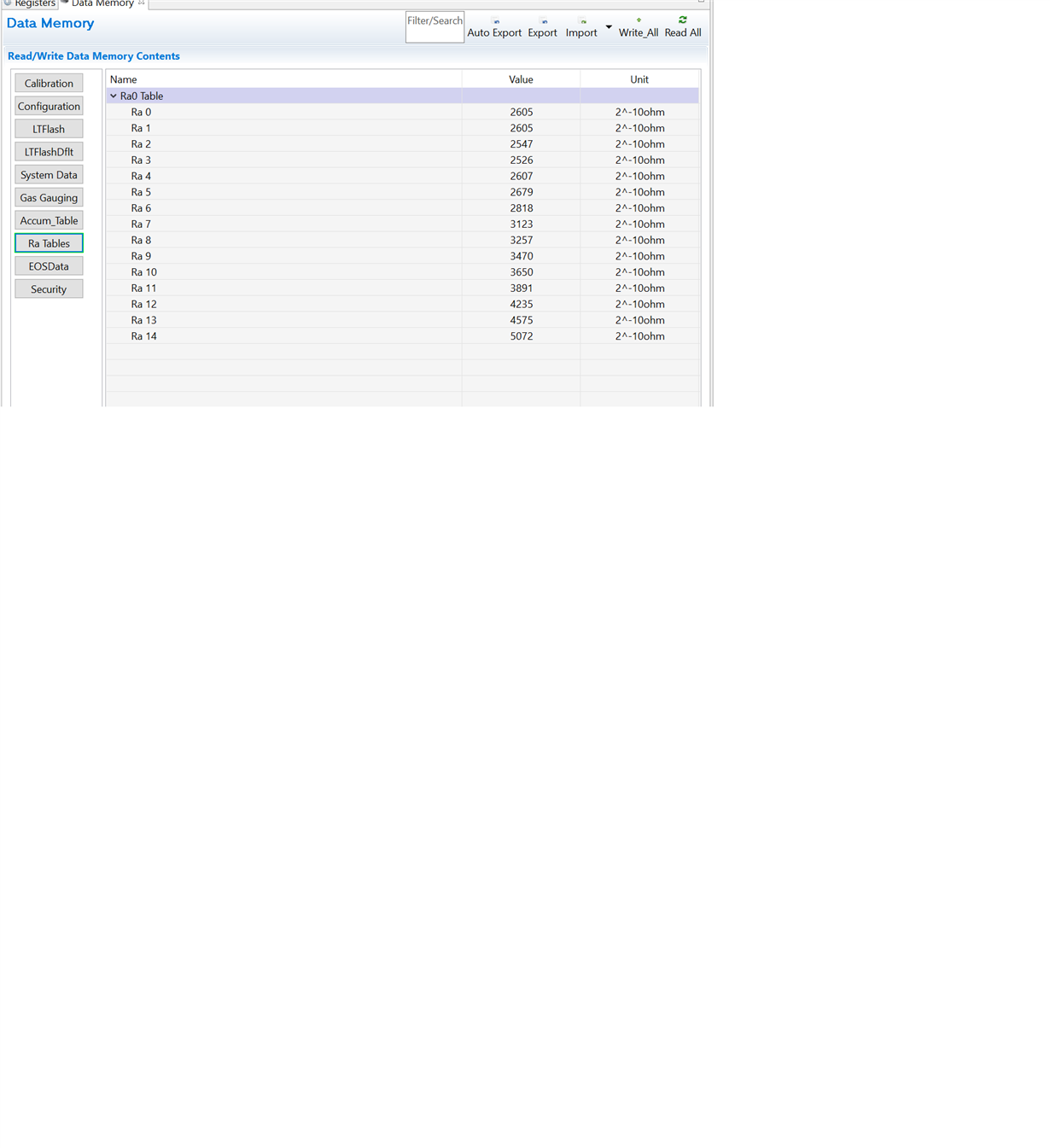Other Parts Discussed in Thread: EV2400
Dear Sir/Madam,
I tried to read Scaled R value and saw that it was almost negative value. And it seems not stable such -193, -2211, -65536.... while not using battery
What does negative value means? is it right?
Using battery EVE model ER34615 19Ah, CHEM ID= 0x0615
Best regards,
KPK



